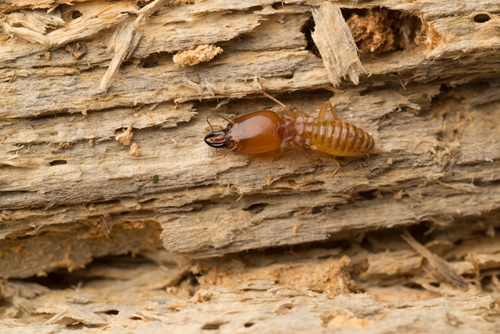- Home
- Resources
- Amerhart Insider Blog
- Construction & Design Trends
- Fighting rot: What you need to know
Fighting rot: What you need to know

Homes that lack the right protection and aren't taken care of can spiral into serious risk of damage over time. This is partly due to wood decay, which can bloom slowly over time.
Unfortunately, spring and summer can be key seasons for this phenomenon, with snow melting and insects on the move. The only lasting solution is to find rot resistant products to keep the structure strong, and this happens to be a great time for that as well.
Looking for telltale signs
Professionals will know that moisture is a bigger threat to wood than insects - even termites. However, it's still possible to miss some of the key vulnerable spots in a home, especially when the weather outside is humid environment. Having resistant siding makes the home stronger from the get-go and can be a big relief.
The International Association of Certified Home Inspectors notes several sources that could lead to dangerous amounts of moisture in the house. These include roof penetrations, basements and untreated wood making contact with the soil. The areas under windows are also prime moisture spots. Even if some of the signs of wood rot aren't present, contractors can still look for high fiber saturation levels to check for it.
Sometimes, treatment doesn't cut it
If caught in time, there are ways to treat wood decay. As The Craftsman Blog explained, thinking ahead can be useful as well, since a home with preventative design can include surfaces angled to shed water when it rains. This is a good strategy to have beforehand, the blog argued, because it will naturally discourage rot, and is important to remember, since "any horizontal surface" can be subject to rot.
That might not be enough to cut out rot threats completely. Sometimes you simply need the right source, including rot-resistant woods and fabricated pieces designed to your specifications.
True rot resistance
The IACHI mentioned this on its site as well, listing some of the most naturally rot-resistant woods: oak, cedar and red mulberry. In contrast, pine, maple and elm are the most rot-prone forms of wood. Be sure to remember this when looking for material, and factor in each type's lifespan for an idea of its true value.
With custom fabrication, this doesn't have to be as much of an issue. Quality composite lumber products can have the same effect as wood without the risk. Using this as a base, you can plan out the adjustments and builds you need, knowing that there's a built-in strength that doesn't require extra application like other materials might.






















